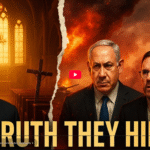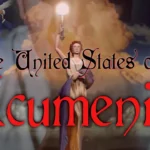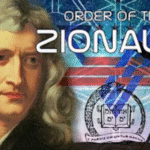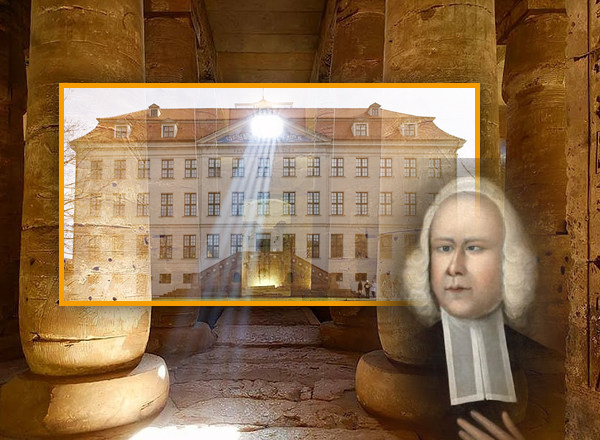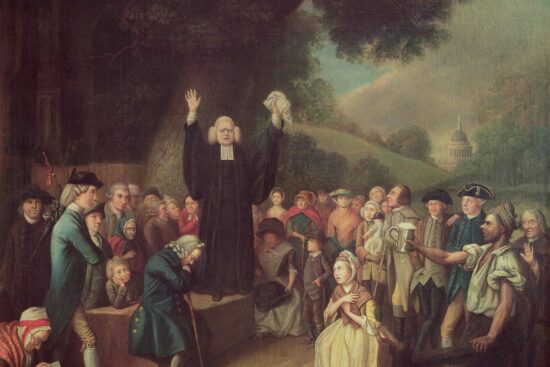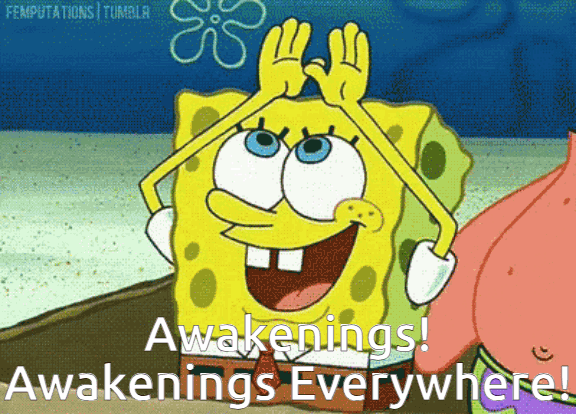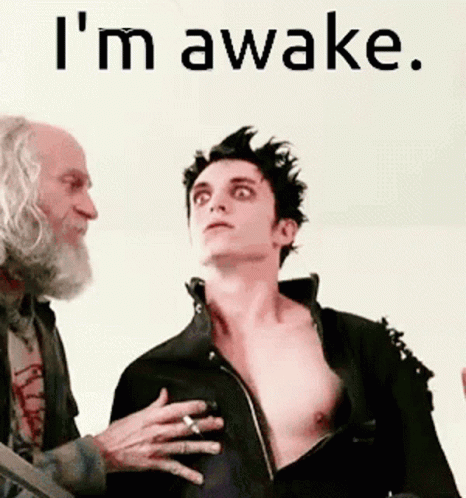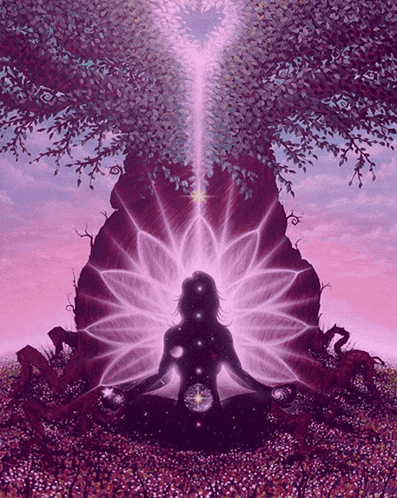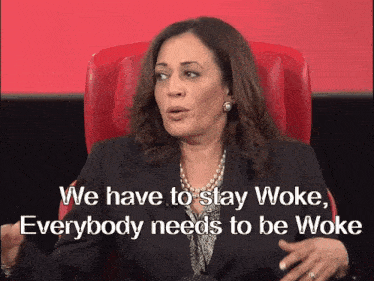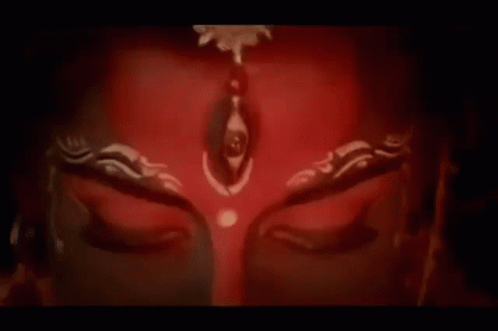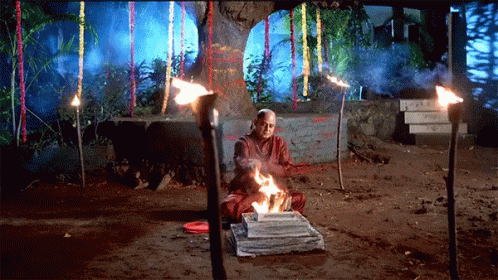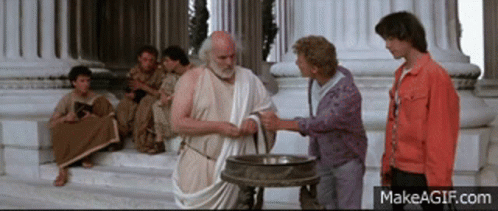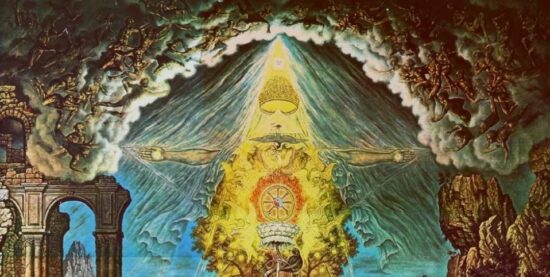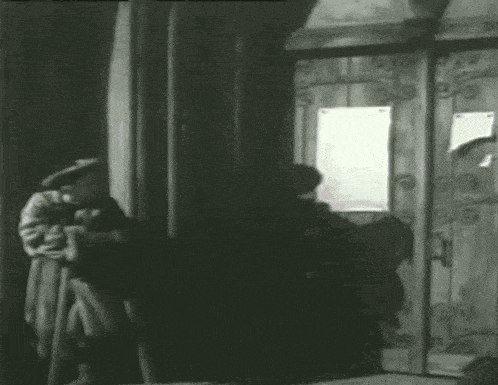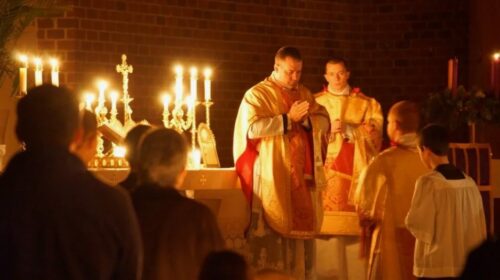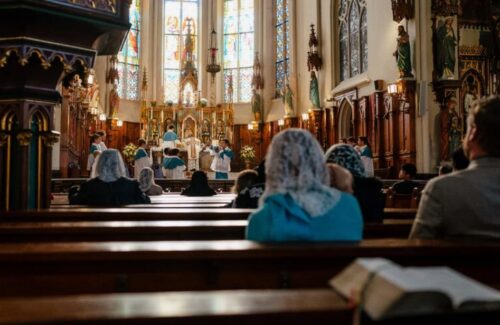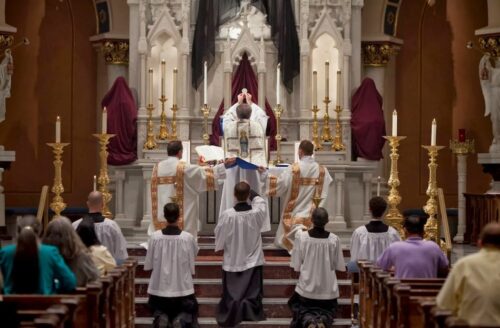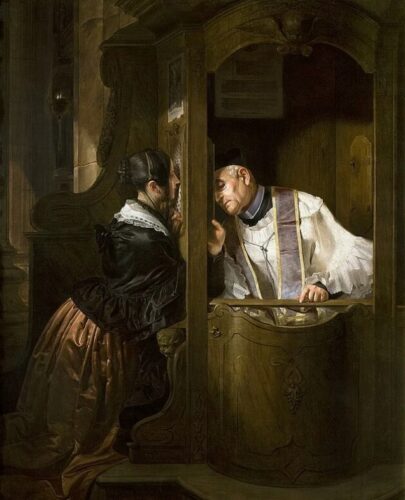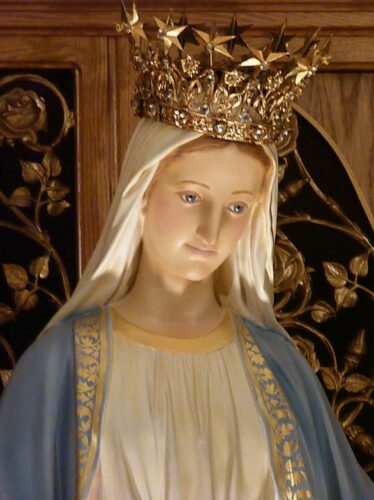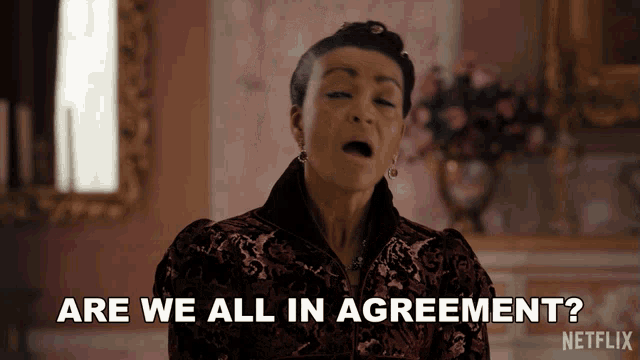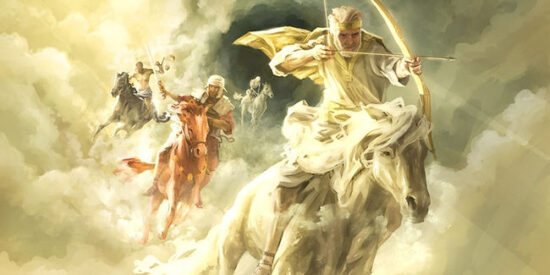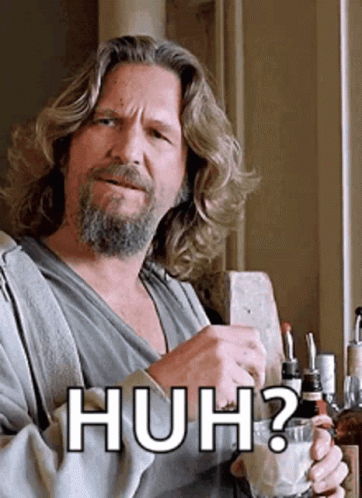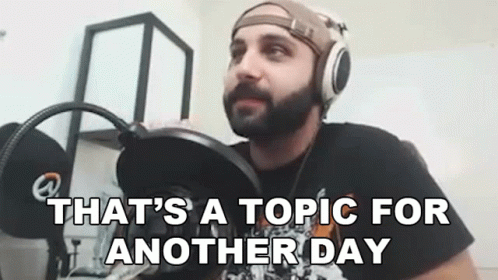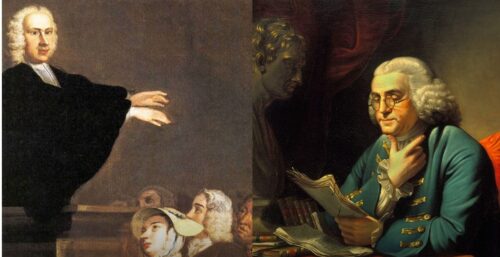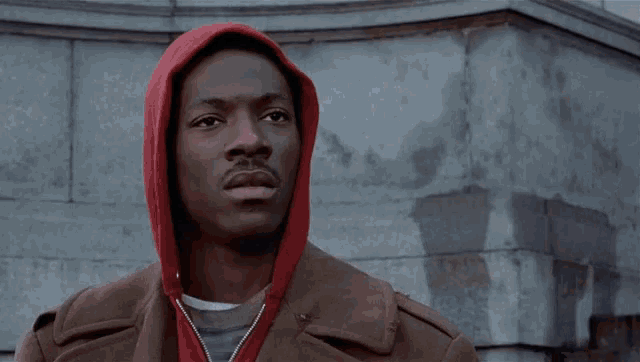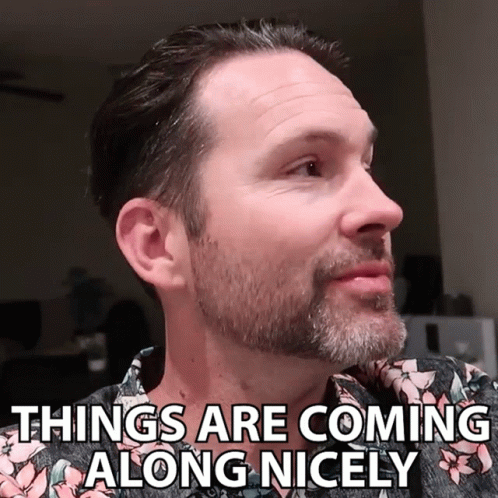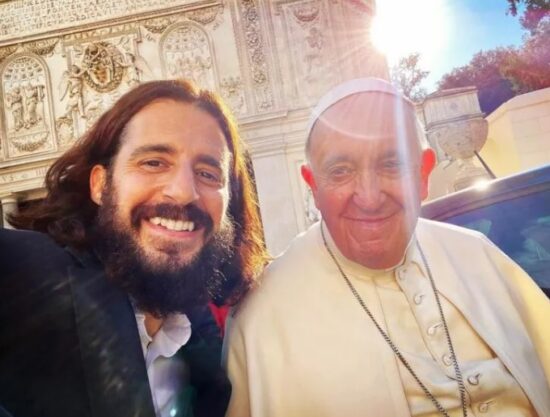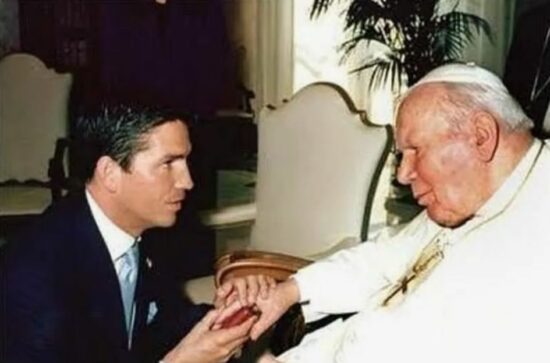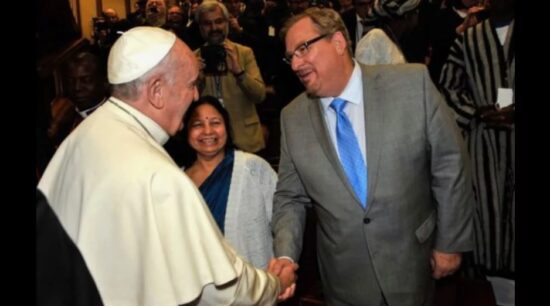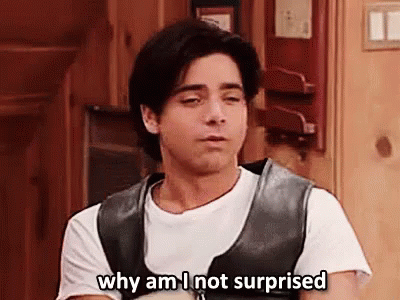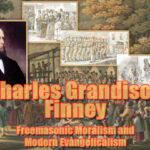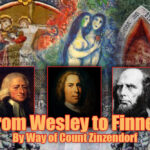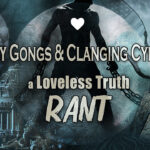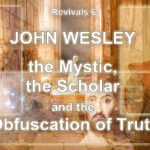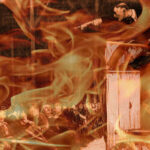Revised to include video. Originally posted Apr 5, 2023.

George Whitefield’s (1714-1770) passionate preaching drew massive crowds on both sides of the Atlantic in the 18th century connecting the Evangelical Revival in England and Scotland with the (First) Great Awakening in America. Together they formed the broader “Awakening” that’s celebrated as having reshaped Protestantism.
THE GREAT AWAKENINGS
Wikipedia describes the Great Awakenings as;
“… a series of Christian Revivals that swept Britain and its thirteen North American colonies in the 1730s and 1740s. The revival movement permanently affected Protestantism as adherents strove to renew individual piety and religious devotion. The Great Awakening marked the emergence of Anglo-American Evangelicalism as a trans-denominational [aka Ecumenical] movement within the Protestant churches….
Revivalists added to the doctrinal imperatives of Reformation Protestantism an emphasis on providential outpourings of the Holy Spirit [discussed in part 1 of this series].* – Wikipedia, First Great Awakening accessed 2/13/25, formatting added
In part one of this series I showed that the term “Revival,” nor even its concept are found in the New Testament. So, right from the start, these events and their leaders need to be held to scrutiny. And here we read about them adding an emphasis on Experience to Protestant doctrine. That focus is not found in scripture but is a hallmark of the Mystery Schools.
Wikipedia’s brief description alone is enough to tell us that the Awakenings were a product of the Counter Reformation, the purported “New Life” they brought to Christianity being strategically crafted to bring about a return, not only to Papal teachings, but the Mystery School teachings underlying them.
Awakenings; Then and Now
The “Great Awakenings” are presented as something unique that happened within Protestantism, but there have been “awakenings” of “spiritual truth” all throughout history including in our own day.
The term “Awakening” in the spiritual/social context refers to a heightened spiritual consciousness, the currently popular exhortation to “wake up” imploring us to open our eyes to reality, or wake from spiritual slumber to an enlightened, deeper understanding.
In the New Age movements, “awakening” refers to a shift in consciousness. People are encouraged to “wake up” to their “higher self,” the “interconnectedness (oneness) of all things” and personal transformation.
The term “woke” today refers to someone who’s aware of Social Injustices (which we’ll see was a key theme among the Revivalists).
“Awakening” was a central theme to both Hinduism and Buddhism long before the Great Awakenings.
In Hinduism, “moksha” (liberation) refers to “Awakening” from the illusion of the material world (Maya) to realize one’s divine nature and unity with the universe (Oneness).
In Buddhism, the concept of “enlightenment” (nirvana) is a profound “Awakening” from ignorance (avidya) to the truth of existence; the temporal nature and interconnectedness of all things (Oneness again).
In ancient Greece, the Socratic method used questions and dialogue to “Awaken” people to their own ignorance and arrive at deeper truths about knowledge, ethics, and existence.
Influenced by Plato, the Greek philosopher Plotinus founded Neoplatonism which presented the material world as a shadow of the divine and that one could achieve an awakening by ascending toward the “One” ultimate reality.
The Christian mystic Augustine was greatly influenced by Plotinus. Rather than emphasizing faith in Christ as revealed through Scripture, Augustine spoke of an esoteric journey to God through an enlightenment process of inner Mystical Experience. His allegorical approach in The City of God betrays Alexandrian, Greek philosophical thought, not the careful study of scripture practiced by the apostles.
Gnostic sects of the 2nd–4th centuries believed that men were trapped in the physical world and needed to “Awaken” to the divine knowledge within themselves in order to escape the material prison.
We’ve already talked about the ancient prophetic awakenings/revivals in the Old Testament, but here’s where we need to use discernment, because, beginning with Martin Luther, the Protestant Reformation is erroneously presented as a Spiritual “Awakening.” Using Jesus’ teachings and Paul’s words in Romans 13:11, Luther’s critique of the Catholic Church’s practices are conflated to be seen as a call for the faithful to “wake up” to the corruption in the Church and return to a personal relationship with God.
The popularized view of the “Great Awakenings” lacks a basic understanding of what the Reformers broke away from, and misses the methodical seeding of occult-inspired Enlightenment Thought into Protestantism by Secret Societies working behind the scenes. It represents a lack of recognition about how our enemy operates. There is no truth in him. Beyond persecuting and destroying God’s people, all he can do is infiltrate, counterfeit and invert The Truth. So, as we go through some of the prominent Revivalists, we’ll be looking for traces of:
- The Counter-Reformation—The Roman Catholic Church’s (RCC’s) infiltration of Protestantism to bring the Reformers back under “Mother Rome” as spelled out in the Jesuit Oath.
- Enlightenment Thought—which is Greek Thought—which is Mystery School thought.
- Their Secret Society membership and/or association.
The Counter Reformation
The following two contemporary statements illustrate the stated authority of the RCC over scripture and its interpretation. These same beliefs were used to justify their tyrannical rule for roughly a thousand years.
In Dei verbum, the Second Vatican Council’s Dogmatic Constitution on Divine Revelation, we read,
“The task of giving an authentic interpretation of the Word of God, whether in its written form or in the form of Tradition, has been entrusted to the living teaching office of the Church alone. Its authority in this matter is exercised in the name of Jesus Christ.” – Dei verbum, promulgated by Pope Paul VI on 18 November 1965, p10
The 1997 Catechism of the Catholic Church states,
“Papal supremacy is the doctrine of the Catholic Church that the Pope, by reason of his office as Vicar of Christ, the visible source and foundation of the unity both of the bishops and of the whole company of the faithful, and as pastor of the entire Catholic Church, has full, supreme, and universal power over the whole church, a power which he can always exercise unhindered: that, in brief, ‘the Pope enjoys, by divine institution, supreme, full, immediate, and universal power in the care of souls.'” – The Catechism of the Catholic Church 1997 – paragraph 937
And yet, Christians by the droves are embracing Ecumenism. <-read that thing! Here’s Billy Graham describing Ecumenism in an interview with Robert Schuller.


“But don’t we all believe in the same God?”
Really.
OK, let’s look at some key RCC doctrines and see just how “alike” we are.
Some Key Roman Catholic Beliefs (RCC) compared to New Covenant Scripture:
RCC: MAGESTERIUM. RCC Cardinals, theologians and the Pope—Claim to have the exclusive authority to decide what the Bible says, how to interpret it and to make official pronouncements on contemporary issues.
Scripture: The individual Christian is indwelt by the Holy Spirit, who enables them to discern God’s Word.
Howbeit when he, the Spirit of truth, is come, he will guide you into all truth:… (Jn 16:13)
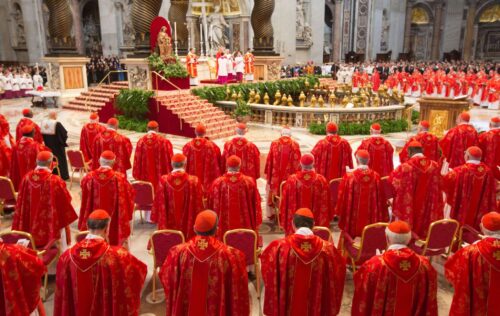
RCC: Scripture PLUS man’s Tradition and Religious Practice are required for Salvation and Grace. The Catholic Catechism states that:
“[The Church] does not derive her certainty about all revealed truths from the holy Scriptures alone. Both Scripture and tradition must be accepted and honored with equal sentiments of devotion and reverence.”
Scripture: Jesus Rebuked the Pharisees for adding their traditions to scripture, saying,
You leave the commandment of God and hold to the tradition of men. (Mk 7:8)
RCC: The Eucharist. The moment that the priest says, ‘This is my body,’ the wafer is supposedly supernaturally transformed to contain the body, blood, soul and divinity of Christ—which becomes spiritual and physical nourishment. 🤢 As you partake, it becomes part of you, transforms you, and makes you more righteous. 🤨
Scripture: Jesus gave us communion as a memorial/ symbolic commemoration of His death in our place.
and when He had given thanks, He broke it and said, “This is My body, which is for you; do this in remembrance of Me.” In the same way He took the cup also after supper, saying, “This cup is the new covenant in My blood; do this, as often as you drink it, in remembrance of Me.” (1 Cor 11:24-25).
RCC: Justification by an ongoing process of Sanctification through Religious practice—including Confession and Absolution by a Priest. The RCC rejects Christ’s imputation of righteousness to us at the moment of salvation.
Scripture: Christ alone took our sin upon Himself and purchased our salvation.
Much more then, being now justified by his blood, we shall be saved from wrath through him. (Rom 5:9)
God made him who had no sin to be sin for us, so that in him we might become the righteousness of God. (2 Cor 5:21)
This righteousness is given through faith in Jesus Christ to all who believe. There is no difference between Jew and Gentile. (Rom 3:22)
RCC: The Priesthood is only reserved for the Magisterium. The ability to bind and loose [which brings to mind a popular false teaching – so here is its origin…] forgiving and withholding forgiveness through the sacraments, penance, etc. is the role of the priest.
Scripture: We are to confess our sins to one another and forgive one another.
Therefore, confess your sins to one another and pray for one another, that you may be healed. The prayer of a righteous person has great power as it is working.(James 5:16).
RCC: “Veneration” of the saints, which is is praying through the Saints and the Virgin Mary as Mediators. The Virgin Mary is seen as “the mother of our Lord, the mother of his body; the church.” Christ/The Living Word is the creator of all things, so—Mary is seen as the mother of angels as well as mankind. The Catholic Church calls her the Queen of Heaven.
Scripture: Tells us only Christ is our mediator.
For there is one God, and one mediator between God and men, the man Christ Jesus. (1 Tim 2:5)
Little children, keep yourselves from idols. (1 Jn 5:21)
OK, can we all agree that this is not in harmony with the Gospel of Jesus Christ?!
The purpose of the Reformation was to free men from tyrannical religious control of the RCC who Reformers saw as the antichrist, not to “Enlighten” or “Awaken” them to their own inner divinity.
Traces of the Counter-Reformation were immediately evident. Pilgrim leader William Bradshaw records this in his journal; Of Plymouth Plantation (1620-1647),
“… when by the bloody and barbarous persecutions of the heathen emperors he [satan] could not stop and subvert the course of the gospel, but that it speedily overspread, with a wonderful celerity… he then began to sow errours, heresies and wonderful dissensions amongst the professors themselves, working upon their pride and ambition, with other corrupt passions incident to all mortal men, yea to the saints themselves in some measure, by which woeful effects followed. As not only bitter contentions and heartburnings, schisms, with other horrible confusions; but Satan took occasion and advantage thereby to foist in a number of vile ceremonies, with many unprofitable canons and decrees, which have since been as snares to many poor and peaceable souls even to this day…”
Of those schisms,
“The one side laboured to have the right worship of God and discipline of Christ established in the-church, according to the simplicity of the gospel, without the mixture of men’s inventions… The other party… endeavoured to have the episcopal dignity (after the popish manner) with their large power and jurisdiction still retained; with all those courts, canons and ceremonies, together with all such livings, revenues and subordinate officers, with other such means as formerly upheld their antichristian greatness and enabled them with lordly and tyrannous power to persecute the poor servants of God. ” – William Bradshaw, Of Plymouth Plantation, 1620-1647
With God’s Word back in the hands of the common man, the battle was far from over. As Bradshaw notes, the Counter-Reformation sowed error and dissension amongst the Reformers that resulted in much “episcopal dignity after the popish manner,” blendings intent on diminishing the power of the Gospel of Jesus Christ.
GEORGE WHITEFIELD – (1714-1770) America’s “Spiritual Founding Father”
OK, fast-forward to the 1700s when Unitarianism (aka anti-trinitarianism, a product of Enlightenment rationalism) was flourishing, (Calvinist, Anglican) George Whitfield (1714-1770) aka “The cross-eyed preacher” our first Revivalist appeared on the scene.
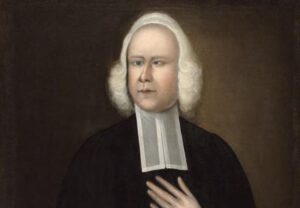
Oxford University educated, the controversial George Whitefield (pronounced “Whitfield”) is said to have experienced his conversion as an Oxford Methodist*, but then four years later he reportedly had a “born again” experience and became a Calvinistic Methodist**, turning from his more “episcopal/popish” belief to one of unmerited grace. Basically:
*An Oxford Methodist referred to a member of the “Holy Club,” a group (aka secret society) of students at Oxford University in the early 18th century that was led by John and Charles Wesley. Simply known as “Methodists,” they were known for their disciplined, methodical approach to Christian living that included regular prayer, fasting, Bible study, and acts of charity.
**A Calvinist Methodist combined Methodist-style revivalism with Calvinism. So, unlike Wesleyan Methodists, Calvinist Methodists held to predestination and God’s sovereign grace in salvation while still promoting personal piety, heartfelt conversion, and revivalist preaching.
Ya, I know, that sounds like straining gnats. But it’s basically just the Calvinist/Armenian dialectic of Predestination vs Freewill packaged within manmade disciplines of Piety and Experientialism. Predestination vs Freewill by the way is a rationalist argument that tries to confine God to the limitations of human reason, and of course He doesn’t fit.
What’s important for our subject today is that both sides recognized a need for heartfelt conversion (spiritual birth), while championing personal PIETY (which is a papal teaching as one of the seven gifts of the Holy Spirit; interpreted as spiritual graces that perfect our natural faculties and enable us to practice virtue, bla bla bla…), and carnal Social Justice.
Piety. Think about it. Can you even imagine the early church being concerned about this nonsense? They had just radically been transformed from death to spiritual life. This world held nothing for them… but that’s another subject. Anyway…
Whitefield wrote this of his born again experience,
“Oh what joy – joy unspeakable – joy full and big with glory was my soul filled when the weight of sin came off, and an abiding sense of the pardoning love of God and a full assurance of faith broke in on my soul.” – Whitefield’s Testimony of Conversion
OK, this is subtle. There is most certainly an Experience when a Christian places their faith in Christ and is born in spirit! But the enemy has counterfeited it throughout the ages with everything from entheogens to rhythmic, repetitive music to psychological manipulation. So, experience always needs to be accompanied by careful discernment and sound doctrine which comes from a careful study of God’s Word.
Whitefield is said to have preached at least 18,000 times to an estimated 10 million people in Great Britain and the American colonies, holding his audiences captive with a blend of Emotion, Patriotism and Social Causes. All of these are signatures of the “Great Awakenings,” which we’ll be getting to in another article.
Like many of the revivalists, Whitefield brought much good… But the very nature of deception is that it contains truth; often much truth. This is what so many Christians today have trouble with, thanks in great part to the Revivalists.
But digging a little deeper we find a man who was very concerned about his image, even using illustrations that compared himself to Christ(!) In her book, Inventing George Whitefield: Race, Revivalism, and the Making of a Religious Icon, Researcher Jessica Parr writes,
“He made a public example of those who failed to live up to the pious model that he set in his autobiographies and his journal, particularly in contrast with the image he presented of himself as an indiscrete youth who had found ‘true religion’ as an adult” Source
The thing Whitefield has been most criticized for, is how, after initially opposing slavery, he became a slave owner and advocate of slave ownership. In fact, he played a significant role in legalizing slavery in the state of Georgia. Slave ownership was a subject that he and fellow ‘Holy Club’ member John Wesley had strong disagreements over, Wesley (who had his own problems which we’ll be looking into) rightly insisting that no man should own another.
Slavery is not specifically forbidden in the New Testament like it is in the Old (ie. Jer 34:10), but it has no place in New Covenant life.
There is neither Jew nor Greek, there is neither slave nor free, there is no male and female, for you are all one in Christ Jesus. (Gal 3:28)
There is no justification for one man owning another, as we are the property of God.
You were bought with a price; do not become slaves of men (1 Cor 7:23)
Assistant professor of Public History and New Media, and author Kyle B Roberts writes in his article “Reconsidering George Whitefield,”
“The crux of the problem comes down to a disjuncture between Whitefield’s early vocal criticism of slaveowners in Charleston for their ostentatious lifestyle and failure to catechize their slaves, and his later aggressive championing of the institution of slavery and his transformation of the Bethesda Orphan House into a slave plantation. Both studies confirm that less than a decade after castigating slaveowners, Whitefield was looking to enter their class as much out of paternalistic concerns as from a desire to reap its economic rewards. He aggressively advocated for the removal of a ban on slaveholding in Georgia… by pushing for legislation that would make slavery legal. (This legislation would finally pass in 1751.) On top of this, Whitefield also illegally brought slave labor into Georgia to work at the Bethesda Orphan House at least two years before slavery was legalized there.” – Commonplace.online – Reconsidering George Whitefield
In addition to being a member of the Holy Club, Whitefield was not at a loss for wealthy friends who were Secret Society members, such as Freemason, Benjamin Franklin.
“At first glance, the friendship that developed between Benjamin Franklin and George Whitefield would seem improbable at best and more likely a work of ironic historical fiction. Yet, the bond that developed between two of the eighteenth century’s most colorful figures was one that was genuine, and probably not as conflicted as one might initially assume.” – Leben.us
When did Whitefield change his view on slavery? When it became financially necessary to achieve his goals. He needed slaves to build his life’s greatest achievement; the Bethesda Boy’s Orphanage in Georgia.
No one can serve two masters, for either he will hate the one and love the other, or he will be devoted to the one and despise the other. You cannot serve God and money. (Matt 6:24)
His recorded “methods” and insistence for complete control over the orphanage is also troubling.
“Whitefield ‘insisted on sole control of the orphanage.’ He refused to give the Trustees a financial accounting. The Trustees also objected to Whitefield’s using ‘a wrong Method’ to control the children, who ‘are often kept praying and crying all the Night.’ – PeoplePill.com
Orphanages; boys homes in particular, have a longstanding reputation of abuse and association with the occulted practices underlying the great religions. But that aside, and purely on a scriptural note; rather than trust God and wait on Him for the building of his orphanage—if indeed it was God’s Will to build it—which I highly doubt—Whitefield—at minimum compromised his principles of brotherly love (1 Cor 13) in bringing it about through human effort. (Welcome to American Christianity).
You adulterous people! Do you not know that friendship with the world is enmity with God? Therefore whoever wishes to be a friend of the world makes himself an enemy of God. (Js 4:4)
Reading about Whitefield’s orphanage we learn that it was a replica of Halle Orphanage in Germany, which Whitefield reportedly had great admiration for.
OK, look at this:
“The centre of Halle’s Pietism was the town school founded in 1698 by August Hermann Francke, which, as a »planting place« for children and young people, sought a Universal Reform of Society through broad education and self-responsibility according to Christian standards. The Halle Orphanage became the hallmark of the largest Social Reform Movement of the early modern period after the Reformation. Francke’s reform ideas spread almost all over the world through a Carefully Cultivated, Close-Meshed Network... Based on the Bible and in the understanding that he was »God’s tool«[!], Francke launched a series of innovations which are noticeable worldwide today as a result of a Broad-Based Educational Reform, Groundbreaking Changes in the Social and Community System and a Fruitful Religious Renewal.” – Francke Halle.de (formatting added)
There it is; The BLENDING of Enlightenment/Mystery SCHOOL thought with Christianity, marking the beginnings of so much we see promoted in the name of Christianity today.
But the sculpture on the facade tells us all we need to know.
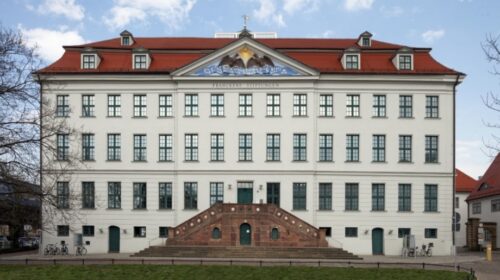
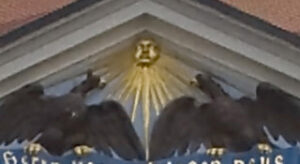
“The university’s main goals were to put an end to confessional polemics [conflict between Catholics & Reformers], to generate tolerance, and to promote harmony among the four faculties: Theology, Law, Medicine, and Philosophy.” The Halle Orphanage as Scientific Community – Observation, Eclecticism and Pietism in the Early Enlightenment – by Kelly Joan Whitmer
Add to that the countless horror stories that have come out of “Christian” orphanages.
But getting back to his slave ownership, Whitefield ‘generously’ allowed his slaves to be taught about Christ at a time when public opinion on the matter was divided, (slave owners worrying that faith in Christ might make their slaves rebellious). But like other esteemed “leaders” he’s defended as having been influenced by the culture of his era and basically having “weaknesses in the flesh” like we all do.
Oddly enough, while Whitefield’s Gospel sermons emphasized the New Birth and transformative power of encountering God directly, they lacked any mention of the New Nature of a person in Christ (2 Cor 5:17), which is the crux of understanding New Covenant life.
So, how’s that Counter-Reformation coming along?
Anyway, in conclusion; a quick look at our first American Revivalist has revealed:
- The infiltration of the Reformation as described in the Jesuit oath
- The carnality, emotion, patriotism and social causes of the “Age of Enlightenment’s” “Great Awakenings” which we’ll be looking further into
- The blending of Christianity with Mystery School teachings
Next up, we’ll look at the “great” Jonathan Edwards.
God bless!
Stay Watchful!
Revivals Pt1 – Asbury: Let’s Talk About Revivals
Revivals Pt2 – Enlightenment in the Land of the Plumed Serpent
Revivals Pt3 – Mystery Schools, The RCC and the Reformation
Revivals Pt4 – The First Great Awakening & The Enigmatic George Whitefield
Revivals Pt5 – The Brimstone and Mysticism of Jonathan Edwards
Revivals Pt 6 – John Wesley (1 of 2) – The Mystery School Dialectic and Christian Mysticism
Revivals Pt 7 – John Wesley (2 of 2) More Mystics & Papal Doctrines of Men
Revivals Pt8 – From Wesley to Finney By Way of Count Zinzendorf
Revivals Pt9 – Charles Grandison Finney, Freemasonic Moralism and Modern Evangelicalism
Revivals Pt10 – The Pagan “Virus“
Revivals Pt11 – The Third Great Awakening: Pentecostalism!
Revivals Pt12 – Pentecostalism Pt2: The Founders of Pentecostalism
Revivals Pt 13 – Social Justice Pt 1 – They Don’t Mix
Revivals Pt 14 – Social Justice Pt 2 – A City Upon A Hill
Revivals Pt 15 – Christ in You vs Millennialism
Revivals Pt 16 – The Counterfeit Enlightenment Pt 1
Revivals Pt 17 – The Counterfeit “Enlightenment” Pt2: The Dark Ages and Golden Age of Islam
Revivals Pt 18 – The Counterfeit “Enlightenment” Pt 3: Islam In the Bible?
Revivals Pt 20 – The Counterfeit “Enlightenment” Pt5: Placing Man Upon An Esoteric Sphere
Revivals Pt21 – The Counterfeit “Enlightenment” Pt6: The Image of the Beast
Revivals Pt22 – Crowning the Lord of the Earth: The Cosmati Pavement
Revivals Pt24 – The Great American Mythos Pt2: A Whole New Mystically Enlightened World
Revivals Pt25 – Creating the American Mythos – Christopher Columbus: The Great American Hero Pt1
Revivals Pt 26 – Christopher Columbus Pt 2 – The Namesake Goddess of a “Christian” Nation
Revivals Pt27 – The Witchcraft of Numbers
Revivals Conclusion Pt2 – What Is The Gospel?
Revivals Conclusion Pt3 – Subversion – From Revivalists to Modern Times


